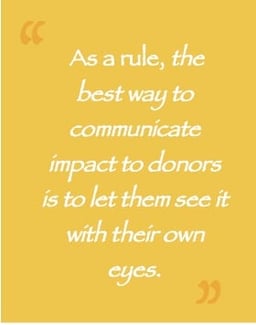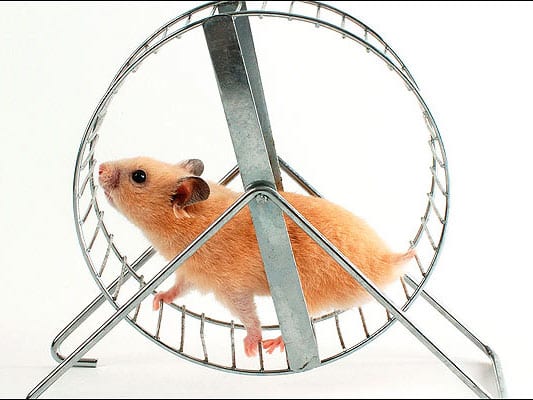Everyone wants to raise major gifts. But very few organizations do it effectively. All too often, they struggle to meet goals, rotating through staff and repeating the same patterns year after year, like a hamster spinning in a wheel. This is number five in a five-part series exploring the reasons why nonprofits fall short in raising big gifts. In our first post we talked about why talent gaps on the fundraising team are such a big factor. The next two entries discussed how too many organizations are failing to ask, or have a paucity of offers appropriate for major donors. In the last two entries, we discuss the importance of making good use of the “space between” solicitations to keep your donors in the fold… last week we talked about how to communicate with major donors, and this week we discuss how to engage them in multi-dimensional relationships.
Reason #5: ONE-DIMENSIONAL RELATIONSHIPS
Last week we talked about how important it is to communicate regularly with your major donors in the “space between” solicitations, and to do so in a way that keeps them continually connected to the impact that their gifts have on the lives of the people you serve.
The other thing you must be doing with donors in the “space between” solicitations is engaging them with others involved in your organization.
The adage that success in major giving is “all about relationships” is absolutely true, but it has to be more than just a relationship with the fundraisers. Relationships between your organization and its major donors actually have four different dimensions, each increasingly important as you advance to higher tiers of giving:
- Relationships with the fund development team, particularly the major gift officer. Fundraisers are typically the point people in most major donor relationships, so they obviously play a key role. Development staff represent only the first stage of relationship, however, and ought to be opening doors to the other dimensions, where the real opportunities for elevated giving occur.
- Relationships with the President/CEO and other key leaders of the organization. The President/CEO is the trustee of your organization’s credibility. Major donors need to have full confidence in the organization’s leadership and will naturally seek out a relationship with the CEO and other key leaders.
- Relationships with “front-line” leaders.
 Donors making smaller contributions give to support the good work that your organization is doing. At higher levels of giving, donors are not giving to simply support the work you do—they are seeking to play a meaningful role in making it happen. This sense of partnership makes all the difference. These donors want to get to know the people entrusted to do the frontline work on their behalf. Donors will also want to hear directly from people whose lives have been changed through their investment in the work. As a rule, the best way to communicate impact to donors is to let them see it with their own eyes.
Donors making smaller contributions give to support the good work that your organization is doing. At higher levels of giving, donors are not giving to simply support the work you do—they are seeking to play a meaningful role in making it happen. This sense of partnership makes all the difference. These donors want to get to know the people entrusted to do the frontline work on their behalf. Donors will also want to hear directly from people whose lives have been changed through their investment in the work. As a rule, the best way to communicate impact to donors is to let them see it with their own eyes. - Relationships with other donors. This is perhaps the highest and most productive of all the dimensions of donor relationships—but also least understood. People naturally yearn to “belong”. Studies have shown that being part of something meaningful gives greater purpose to life. This is the transformative nature of giving at its best—if you can foster a sense amongst your donors that they are collectively part of a common-cause community achieving a purpose greater than themselves, you will change their lives for the better and see unparalleled generosity as a result.
Developing “four-dimensional” relationships with donors does not happen on its own—it requires active effort with a strategic purpose. If you really want your major gift program to reach heights like never before, get creative in connecting with your donors on all four of these dimensions.
Throughout my twenty-five year fundraising career, I have seen robust major gifts programs make a real difference in nonprofits. By avoiding these five common pitfalls, you will start seeing much-improved outcomes leading to real success in major giving.
Does your organization need help getting off the hamster wheel? We can help you achieve real success in growing your major gift fundraising effectiveness and outcomes. Why not contact us today to learn more?


